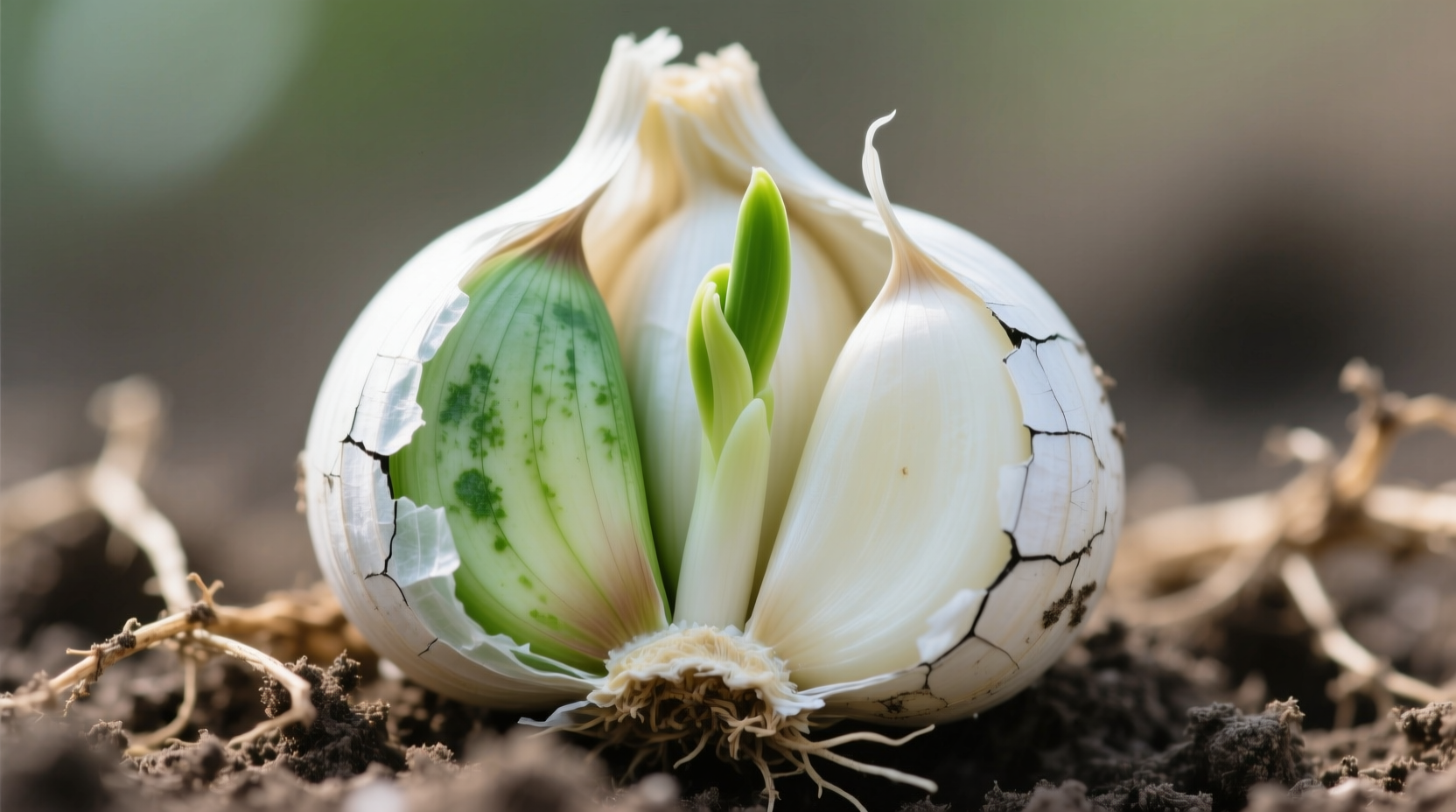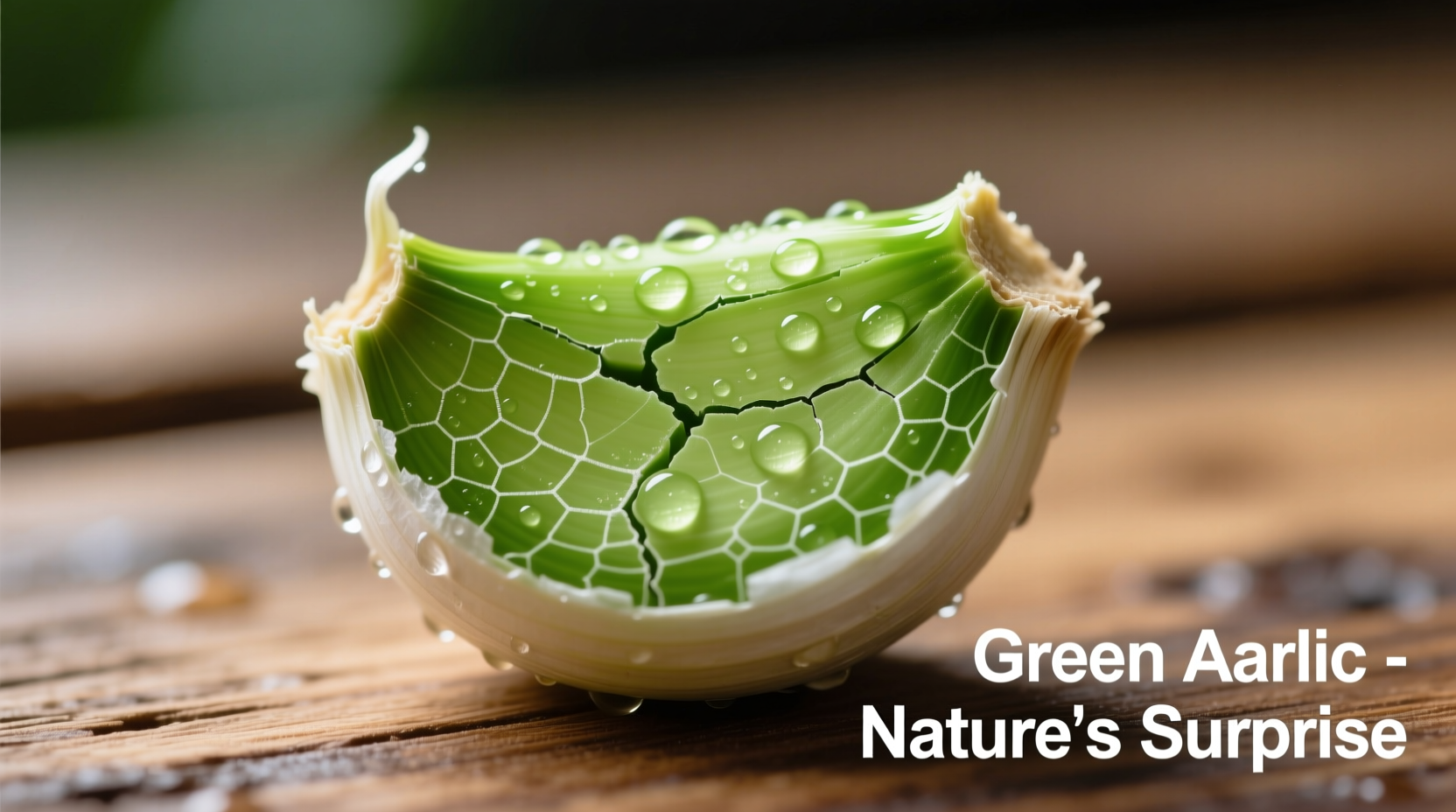Garlic turns green due to a natural chemical reaction between sulfur compounds and amino acids when exposed to acid or heat. This color change is completely safe to eat and doesn't indicate spoilage—it's simply a visual transformation that occurs in certain cooking conditions.
Have you ever sliced garlic only to find it developing blue or green hues? You're not alone. This surprising color change sends many home cooks straight to the trash can, fearing contamination or spoilage. But here's what you need to know: green garlic is almost always safe to eat. In this guide, we'll explain exactly why garlic turns green, when it's perfectly normal, and those rare cases when you should be concerned.
The Science Behind Green Garlic: More Than Just a Color Change
Garlic's transformation isn't magic—it's chemistry. When garlic cells are damaged through cutting or crushing, enzymes release alliin and alliinase. These compounds normally create garlic's characteristic pungent aroma. But under certain conditions, they interact differently:
| Normal Garlic Reaction | Green Garlic Reaction |
|---|---|
| Alliin + alliinase → allicin (pungent compound) | Alliin + amino acids + acid/heat → anthocyanins (pigments) |
| Creates familiar garlic aroma | Creates blue/green pigments |
| Occurs at room temperature | Accelerated by acidic environments |
This process creates anthocyanins—the same pigments found in blueberries and red cabbage. The intensity of the color depends on garlic variety, growing conditions, and preparation methods. Younger garlic tends to develop more dramatic color changes than mature bulbs.

When Green Garlic Is Perfectly Safe (Most Cases)
Understanding the context of your green garlic determines whether it's safe. Here's when that blue-green hue is completely normal:
- Vinegar-pickled garlic: When making pickled garlic or aioli with lemon juice, the acid triggers pigment formation
- Cooking with wine or tomatoes: Acidic ingredients in recipes accelerate the color change
- Refrigerated garlic preparations: Cold temperatures can enhance pigment development
- Garlic stored in metal containers: Copper or aluminum reacts with garlic compounds
According to the USDA Food Safety and Inspection Service, color changes in garlic don't indicate spoilage when proper storage guidelines are followed. The distinctive garlic aroma remains the best indicator of freshness.
Green Garlic Timeline: How the Color Develops
Understanding the progression helps distinguish normal color changes from actual spoilage:
- 0-2 hours: Initial cutting releases enzymes that begin pigment formation
- 2-24 hours: Color intensifies, especially in acidic environments
- 1-3 days: Maximum color development occurs
- 3+ days: If accompanied by sliminess or foul odor, indicates actual spoilage
This natural process differs significantly from mold growth, which typically appears as fuzzy spots rather than uniform coloration throughout the clove.
Practical Prevention Strategies for Home Cooks
If you prefer to avoid the color change for aesthetic reasons, these professional kitchen techniques work:
- Blanch garlic first: Briefly boil cloves for 30 seconds before using in acidic preparations
- Use older garlic: Mature bulbs contain fewer pigment-forming compounds
- Avoid reactive metals: Use glass, ceramic, or stainless steel containers
- Add acid later: Incorporate vinegar or citrus after cooking completes
- Control temperature: Keep garlic preparations below 40°F (4°C) or above 140°F (60°C)
Professional chefs at the Culinary Institute of America note that many traditional recipes actually rely on this color change for visual appeal, particularly in Middle Eastern and Asian cuisines where green-tinted garlic paste is considered desirable.
When Green Garlic Signals a Problem
While most green garlic is safe, watch for these warning signs that indicate actual spoilage:
- Soft, mushy texture instead of firm cloves
- Foul, sour odor replacing garlic's characteristic aroma
- Visible mold growth (fuzzy patches rather than uniform color)
- Excessive moisture or slimy film on cloves
The University of Minnesota Extension confirms that properly stored garlic in oil should never develop mold or off-odors. If your green garlic shows these spoilage indicators, discard it immediately.
Embracing the Color: Culinary Opportunities
Instead of viewing green garlic as a problem, many cultures celebrate this natural phenomenon:
- Chinese black vinegar garlic: The extended fermentation creates beautiful blue hues
- Mexican green garlic sauce: Uses intentionally colored garlic for visual appeal
- Middle Eastern muhammara: Relies on roasted garlic's natural color transformation
Chef Thomas Keller notes in Ad Hoc at Home that "the color change in garlic is not a flaw but a feature—understanding it gives you greater control over your cooking results."











 浙公网安备
33010002000092号
浙公网安备
33010002000092号 浙B2-20120091-4
浙B2-20120091-4